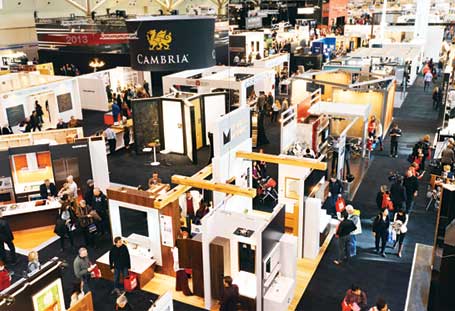The Canadian tradeshow industry has weathered the recession better than a lot of global markets. Although its industry has seen some shifts since 2006, Canada’s tradeshow markets have remained strong.
According to UFI, The Global Association of the Exhibition Industry’s Global Exhibition Barometer, released in January 2013, the Americas is the only region where a majority of respondents declared that the impact of the economic crisis on their exhibition business is now over. Canada has seen its fair share of adjustments, but hasn’t really felt the recession’s full brunt.
“Canada was not hit as hard as many countries, so our tradeshow industry was also not hit as hard,” said Barry Smith, president and CEO, Metro Toronto Convention Center.

Changes in the way business to business events are conducted have been a necessity, but the overall conducting of business as usual remains unchanged. Like any savvy corporation looking to protect margins and revenues, Canadian industry professionals, from the venues to the exhibitors, have trimmed fat.
“Like the rest of the world, we have seen the financial market driven recession take years to recover with balanced budgets and full employment still years away,” said Smith. “Lower net square footage sold, lower attendance and tougher negotiations became the rule of the day.”
While no global tradeshow markets have really crashed, there have been severe accounts of lower attendance in various regions. The UFI November 2012 Industry Statistics Report describes a 1.1 percent attendance drop from 2006-11 on the North American continent. The largest portion of that being 3.5 percent between 2008-10. The U.S. saw drastically fewer numbers in existing shows for these years. Lower attendance came in a different form for the Canadian industry according to Smith.
“We did not see as many new shows launch, and of those we did see, it was even tougher for them to survive in the market,” said Smith. “As always in a recession, those shows that may have faced declining enrollment for other reasons are particularly vulnerable, as well as shows that had multiple events in the same category. Competition for scarce dollars is tight.”
According to the UFI Barometer, 38 percent of the Americas developed new activities within the classical range of the exhibition industry and 25 percent of new activities in terms of live or virtual events.
Fifteen countries account for 80 percent of global venue space, and since 2006, Canada is responsible for 6 percent of overall space increases. Since 2011, Canada claims 2 percent of the overall 80 percent, but as 2013 rolls in some are feeling confident things are not only good, they’re getting better.
Smaller venues, such as the Québec City Convention Center (QCCC) and ExpoCité’s Center de foires, have made the decision to strengthen alliances, but didn’t really feel the recession. In addition to the new partnership, QCCC is planning a 73,000 sq. ft. expansion thanks to a $36 million government investment.
“A number of new tradeshows are knocking on our doors to hold their events in the coming years,” said Lynn Chiasson, Canadian market sales manager, Québec City Convention Center. “The Québec tradeshow industry is booming. We’re booking more events and planners seem to be planning further ahead.”
Government investments are something Smith said are harder to get in a recession, though the industry is rebounding. Some shows dependent on government participation have been the hardest hit. However, they’re seeing moderate growth in exhibit sales driven by market segments in Toronto. Examples include shows with a focus on design, innovation, construction, and natural resources. Promotion efforts are being made accordingly.
“Shows are building bigger conference components and/or accreditation into their program, meeting the needs of those attendees that need to be there,” said Smith. “Also, marketing strategies everywhere, including social media, are strategically targeting the right attendee to get a higher quality experience rather than sheer volume of people.”
According to the UFI Barometer, the situation appears rather solid with a majority of companies still declaring an increase in its revenue in 2012 and an increase projected for 2013. North America, which had a slowdown in growth in 2012, appears to be the region with the highest proportion of companies expecting an increase in revenue in 2013.
“I would think that it is headed toward a slow upward trend,” said Smith. “I think the allocation of space to exhibits vs. meetings will continue to evolve. I think we will see more creativity on the exhibit floor itself.”





























